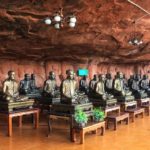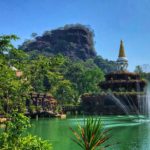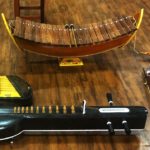Sakon Nakhon History: Isan City, Province & People
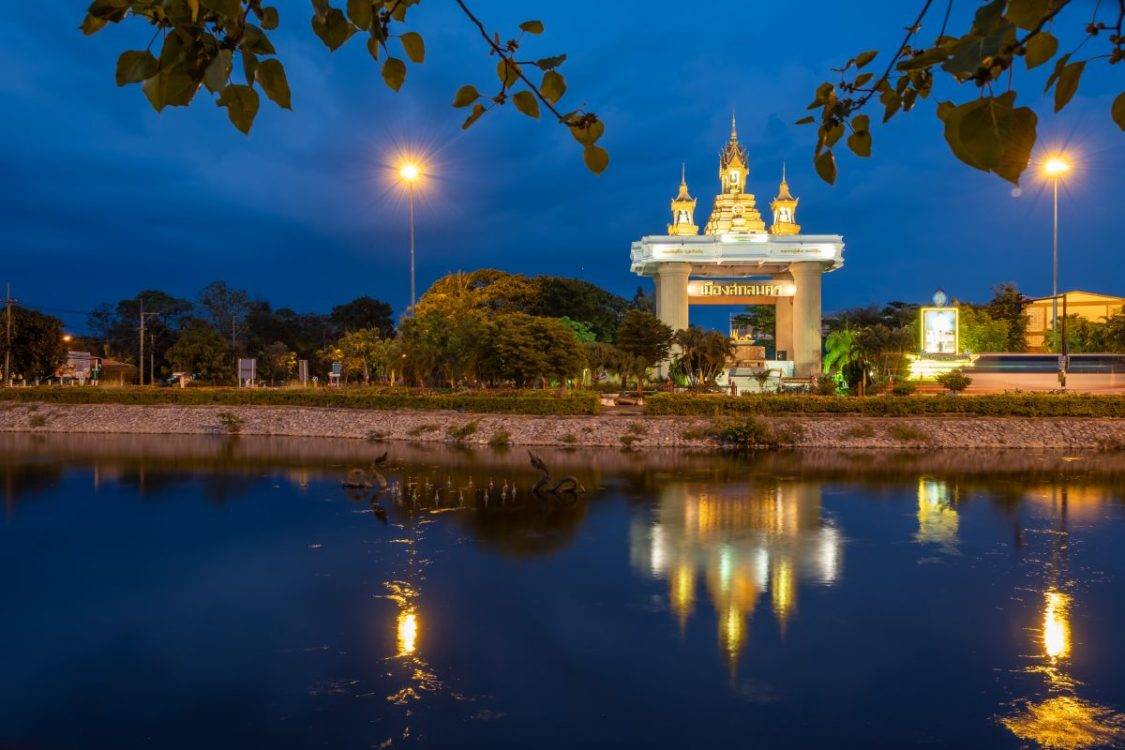
Sakon Nakhon (สกลนคร) is a city and province located in the upper northeast region of Thailand known as Isaan or Isan. It is a province filled with mountains, lakes, forests, and farms, as well as 100s of Buddhist temples and a rich cultural history stretching back thousands of years.
Sakon Nakhon City Name (Etymology)
The word “Sakon Nakhon” is derived from the Sanskrit word sa-ka-la, meaning total, encompassing, or wholly, and the word “Nakhon” is derived from na-ka-ra in Sanskrit, meaning the source or city. So, put together, the name Sakon Nakhon means “City of Cities” in Sanskrit.
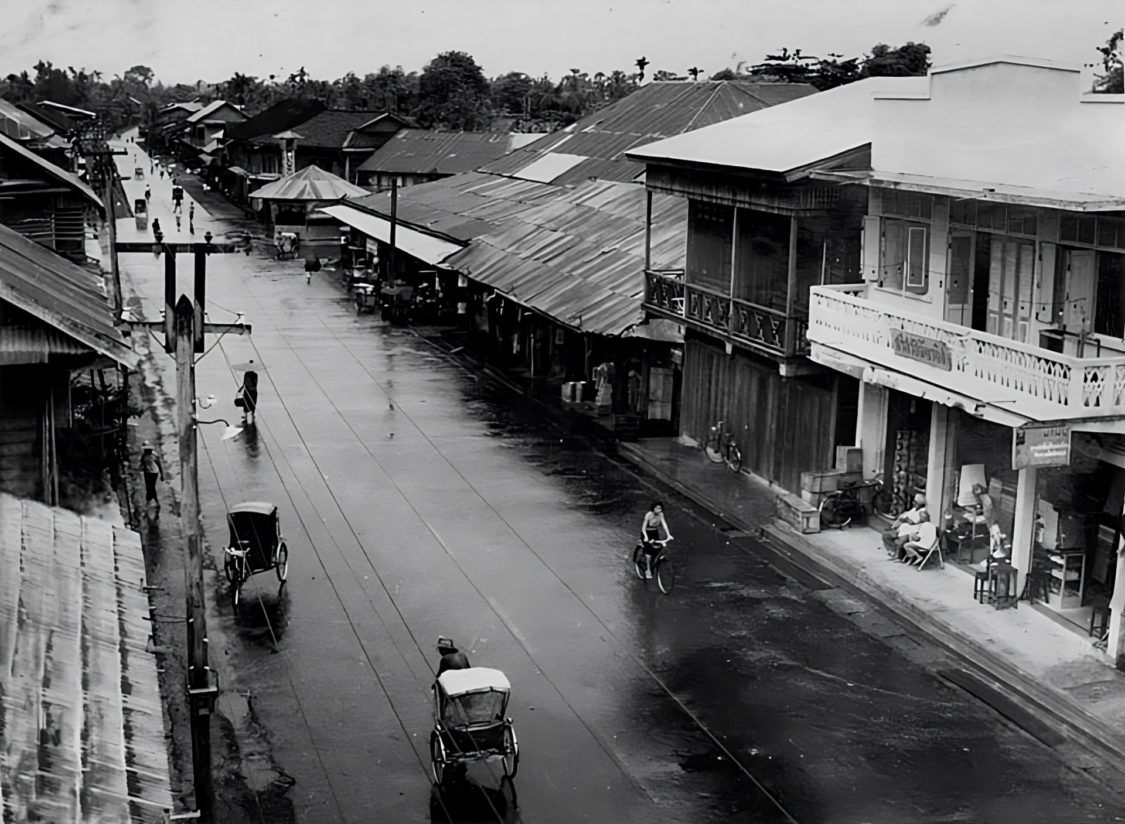
Sakon Nakhon Province as Dharma Basin
The history of Sakon Nakhon is inextricably linked with Buddhism and Hinduism. This Isan province has been referred to as a Dharma Basin. That is, a regional area that has given birth to important Buddhist landmarks and monks that teach the wisdom of the Buddha. Ancient Khmer era monuments include Phra That Choeng Chum, Phra That Dum, Phra That Narai Cheng Weng, and Phra That Phu Pek. Genuine footprints of the Buddha are said to exist at Wat Phra That Choeng Chum, and a miraculous appearance of Buddha’s footprints in the woods across from Wat Phra Phutthabat Namthip.
There are also hundreds of Isan temples and “priest camp sites” (or monasteries) scattered throughout the villages, forests, and mountains of the province, many of which have on display gorgeous Buddhist and Hindu statues, and paintings depicting scenes from the Jataka tales (stories from the Buddha’s previous lives).
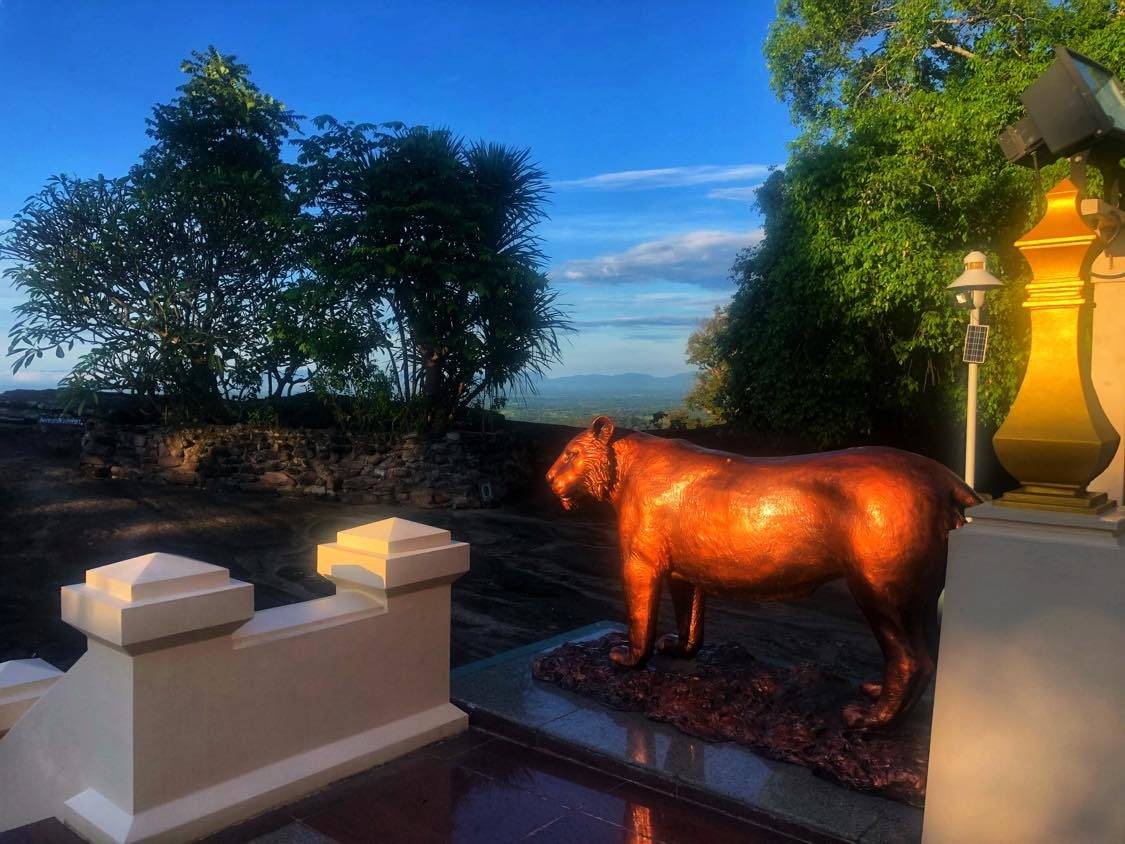
In addition, Sakon Nakhon is one of the Northeastern Thai provinces that co-founded the Thai forest tradition, a highly disciplined lineage of Theravada Buddhism. Thus there are venerated Isan monks who spent many years in Sakon Nakhon and who are known throughout Thailand and abroad. These include Phra Ajahn Mun Phurithatto, Phra Ajahn Fun Acharo, Luang Pu Louis Chanthasaro, Phra Ajahn Wan Uttamo, and Luang Pu Thet. Exhibits honoring the lives of Ajarn Mun and Luang Pu Louis can be found in Wat Pha Suttawas in downtown Sakon Nakhon, while a museum honoring Ajahn Fun Acharo is located at Wat Pa Udom Somphon in the Phanna Nikhom district.
Sakon Nakhon Civilization: Ethnic Tribes & Communities
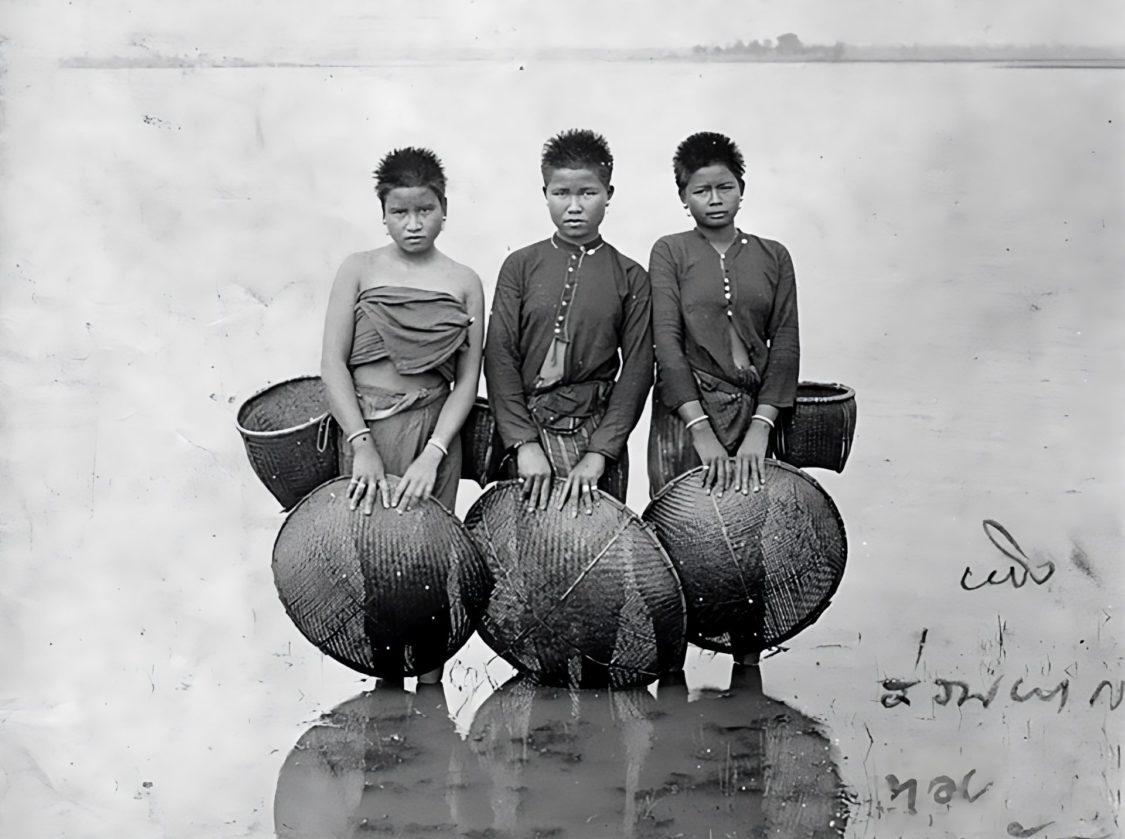
Sakon Nakhon Province has a long history stretching back to prehistoric times, as is evidenced from the excavation of dinosaur fossils in the Phu Phan mountain range and prehistoric cave paintings (3,000-year-old Petroglyphs) at Pha Phak Wan in the Phu Pha Lek National Park. Prehistoric archeology has been found in 83 sites throughout the province of Sakon Nakhon. And it is believed that ancient people started building communities in the area around 3,000 years ago.
Sakon Nakhon was formerly part of the Khmer empire, which spread its civilization (including Hinduism and Mahayana Buddhism) along the Mekong River to Sakon Nakhon and Udon Thani. Researchers believe that Sakon Nakhon was intended to be the center of the Northern region of the Khmer empire, with Phra That Phu Phek (situated on a hilltop in the Phu Phan Mountain range) being the cosmological symbol of the region. The city of Sakon Nakhon (then called Nong Han Luang) was laid out in a cosmic mandala, according to traditional Hindu beliefs.
The Khmer city of Nong Han Luang was eventually abandoned (it is believed due to drought), and the residents returned to Cambodia. A re-emergence of the city occurred during the era of Lan Xang, the Lao Kingdom which, for 3 centuries (1353 to 1707), was one of the largest kingdom in Southeast Asia. During this period, Sakon Nakhon was known as Chiangmai Nong Han (which translates to “New City at Nong Han), and the area transitioned spiritually from Hinduism to Lan Chang Theravada Buddhism, with former Hindu shrines being re-interpreted through the eyes of Buddhist cosmology, or becoming the site of a new Buddhist temple, as was the case with Phra That Choeng Chum.
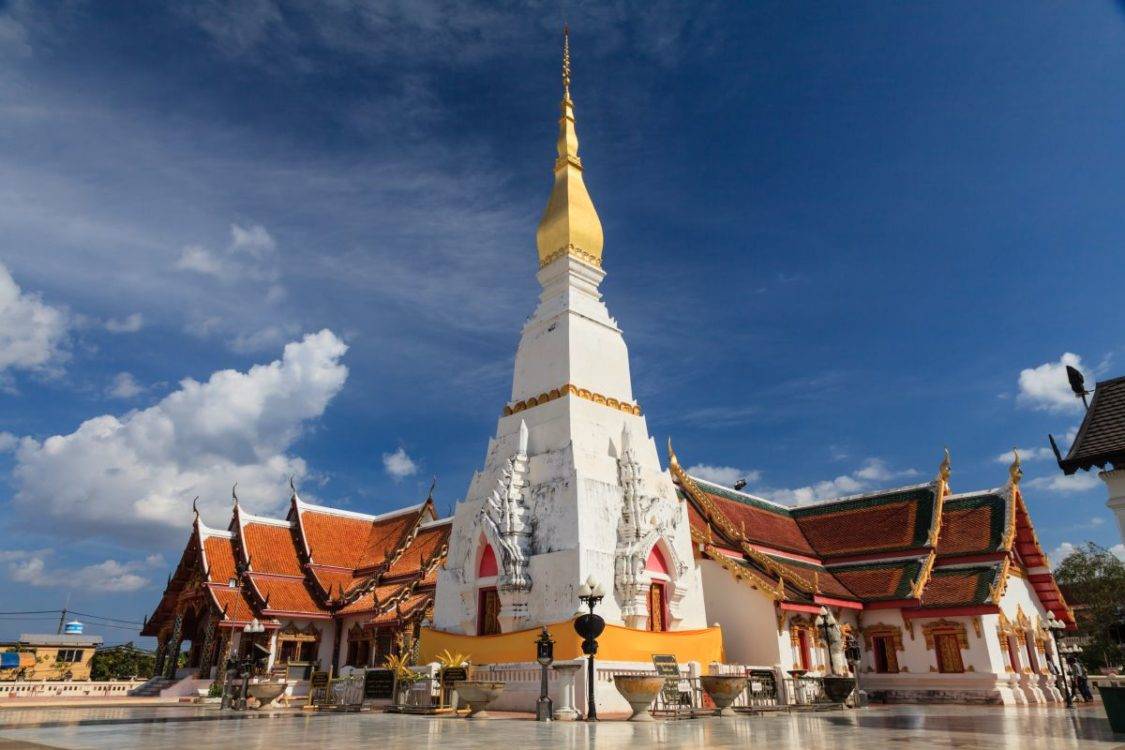
Sakon Nakhon came under control of Siam during the Ayutthaya period, with new communities being founded around Nong Han Lake. Its name eventually became “Sakhon Thawapi” in 1830. The name of the city was changed to Sakon Nakhon by city governor Thao Ngon Khan in 1887, during the reign of King Chulalongkorn (1868-1910).
After creating Thailand’s provincial administration administration in 1901, King Chulalongkorn bestowed city governor Thao Ngon Khan with the new name Phraya Prachanprathet Thani, and made him Sakon Nakhon’s first provincial governor. This legendary governor is still honored every year in Sakon Nakhon with the “Wan Chao Khun Chan” ceremonial event.
During the Siamese era, various ethnic tribes have settled in Sakon Nakhon (all with unique dialects and traditions), in communities that still exist today. These include The Yo or Thai Yo ethnic group, the Phu Thai ethnic group, the Tai Kaleng or Kaloeng tribe, The Thai So ethnic group, the Bru or Brao ethnic group, and the Catholic Vietnamese people of Ban Tha Rae.
Sakon Nakhon World War II History
During World War II, the people of Sakon Nakhon played an important role in the resistance against Japanese occupation. The Free Thai (or Seri Thai) movement was organized with the help of British and American soldiers. And the largest guerilla group of this movement was founded by Sakon Nakhon native Tiang Sirikhan. He was given the nickname General Phu Phan because his guerilla group organized resistance operations from the Phu Phan mountains, and hid munitions and other supplies in the Seri Thai cave, which still exists today as an Isan tourist attraction.
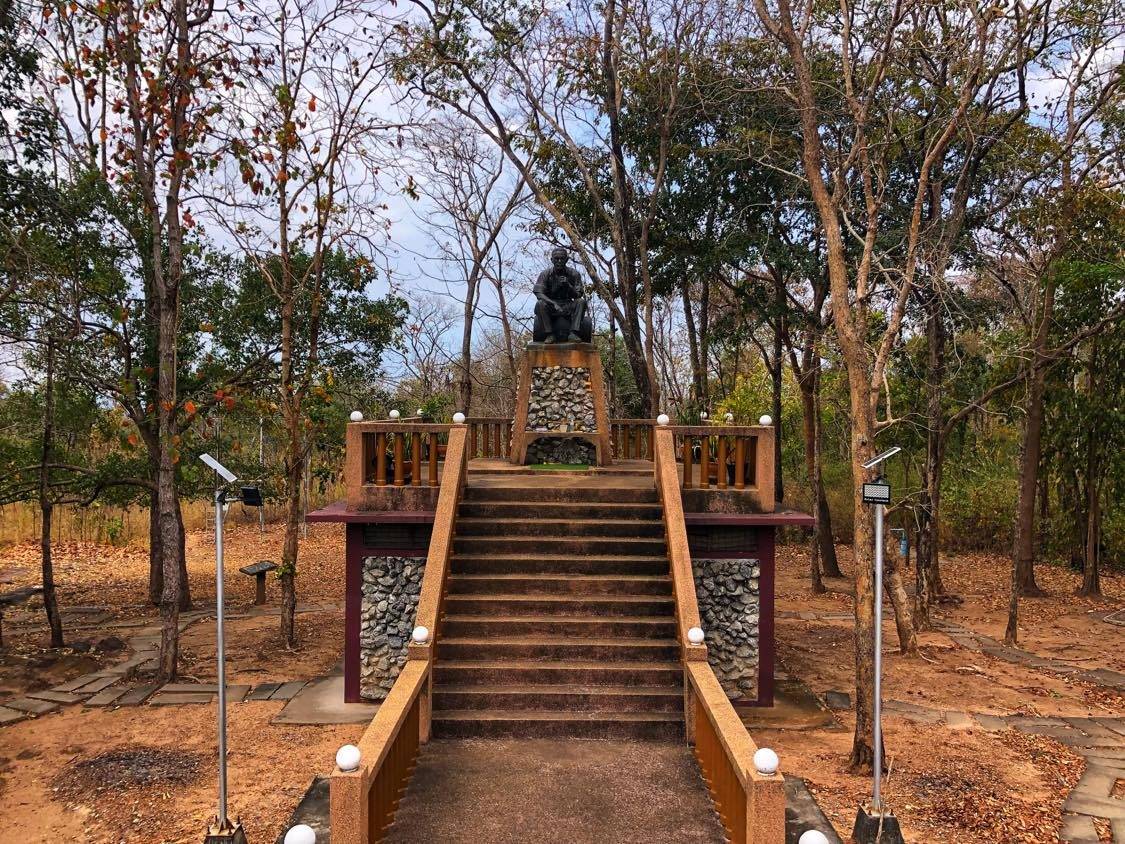
Sakon Nakhon Communism History & Vietnam
During the Vietnam war era, Thailand was an ally of the United States, providing the third-largest amount of ground forces to assist the South Vietnamese. Only the Americans and South Koreans provided more forces. Thailand also provided important air bases to the war effort, the ones in Udon Thani and Nakhon Phanom being not too far from Sakon Nakhon. Thailand became so involved because they were worried about communism spreading to Thailand. And indeed there were communist insurgencies in Thailand, Sakon Nakhon being home to the largest communist insurgent group (about 1,500 men), who took advantage of the Phu Phan Mountains as a refuge, just as Tiang Sirikhan did decades before when organizing the Free Thai insurgency guerillas.
There was violent fighting between Thai soldiers and the communist insurgents in Sakon Nakhon during the late 1960s, as well as in Southern Thailand, culminating in the infamous Red Drum killings of Southern communist fighters in 1972. After that, King Bhumibol the Great (who long hated the idea of Thais killing other Thais) tried to persuade the Thai authorities to take a lighter approach, working on non-violent ways to disband the communists. However, the communists insurgents remained violent, and killings continued to take place, leading eventually to the Thammasat University Massacre in 1976, where leftist students who were considered communist sympathizers were killed and injured.
Thailand was able to finally peacefully end the communist movement in 1980, when Prime Minister Prem Tinsulanonda, under the encouragement of King Bhumibol, provided amnesty to the communist insurgents. Fittingly, King Bhumibol’s son, the current King of Thailand, His Majesty Maha Vajiralongkorn, met with the ex-communists in Sakon Nakhon in 2020 at Sakon Nakhon Rajabhat University, praising them for their love of country, and for becoming pillars of the nation with valuable lessons to teach the next generation. King Vajiralongkorn has a residence in Sakon Nakhon (Phu Phan Ratchaniwet Palace), which he stays at when visiting the Northeast of Thailand.
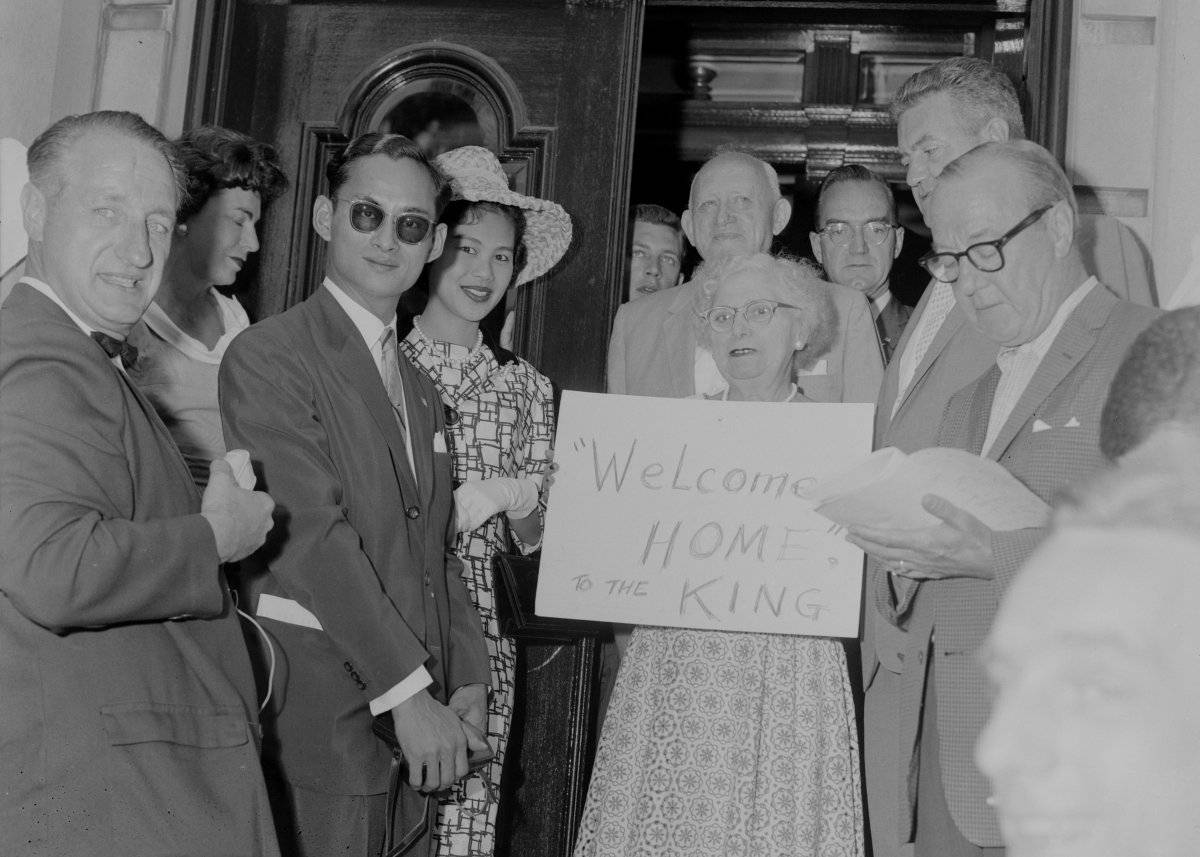
Sakon Nakhon Geography & Crops
The topography of Sakon Nakhon is generally a plateau, a combination of mountains and basins — including flood plains, as seen most vividly in the destructive floods of 2017 (the worst floods to have hit Sakon Nakhon in 20 years). The lowest basin point is Nong Han Lake in Sakon Nakhon city. Nong Han is the largest natural lake in Northeastern Thailand.
The Phu Phan Mountain Range borders Sakon Nakhon in the West and South. The mountains are a watershed that feed into reservoirs throughout the province, which in turn feed into the canal system that farmers use during the dry season to water their crops. However, not all Isan farmlands have access to the canal system, so many can only grow one crop during the rainy season.
The Songkhram River also is a source of water for small Sakon Nakhon farms that are adjacent to the river. This river is a tributary of the Mekong River, and one of the more important but lesser known rivers in Northeast Thailand. It originates in the hills between Nong Han District (Udon Thani) and Sawang Daen Din (Sakon Nakhon). This river is a spawning ground for 192 species of fish, and provides a natural habitat for 136 species of birds, and 208 plant species.
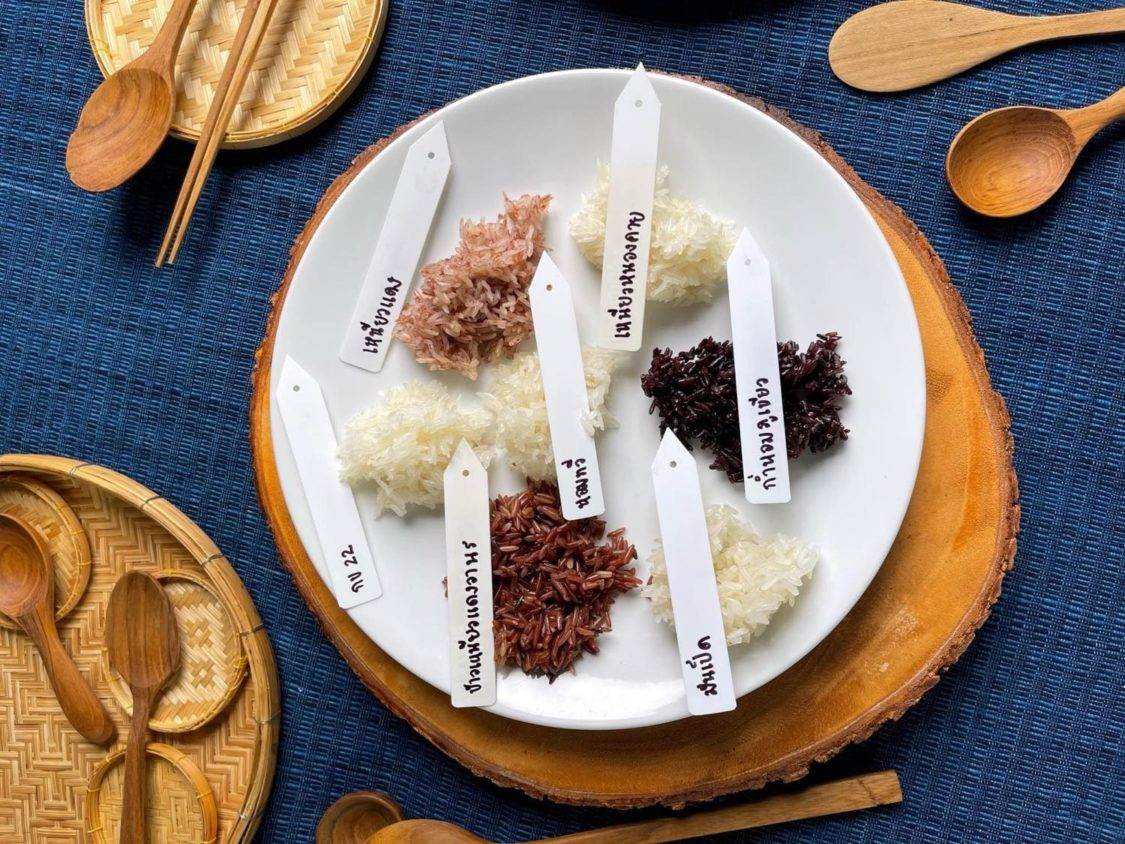
Crops grown in Sakon Nakhon include sugarcane, maize, peas, cassava, and soy beans. However, not surprisingly, the most important cop is rice. Sakon Nakhon rice is considered among the very best in Thailand, winning several awards. The most well-known rice growing community in Sakon Nakhon is Hom Dok Hang, which grows an amazing 300 different varieties of rice, all of which have their own unique flavor and texture profiles.
Sakon Nakhon Climate
Because of the Southern and Western mountains of Sakon Nakhon, the province gets less rain from Southwest monsoons. The heavy rains that come during the rainy season (especially August and September) come from low pressure troughs originating in the Gulf of Tonkin and South China Sea. Showers can occur at any time of the year, with an average rainfall of approximately 1,578 millimeters (62 inches) per year.
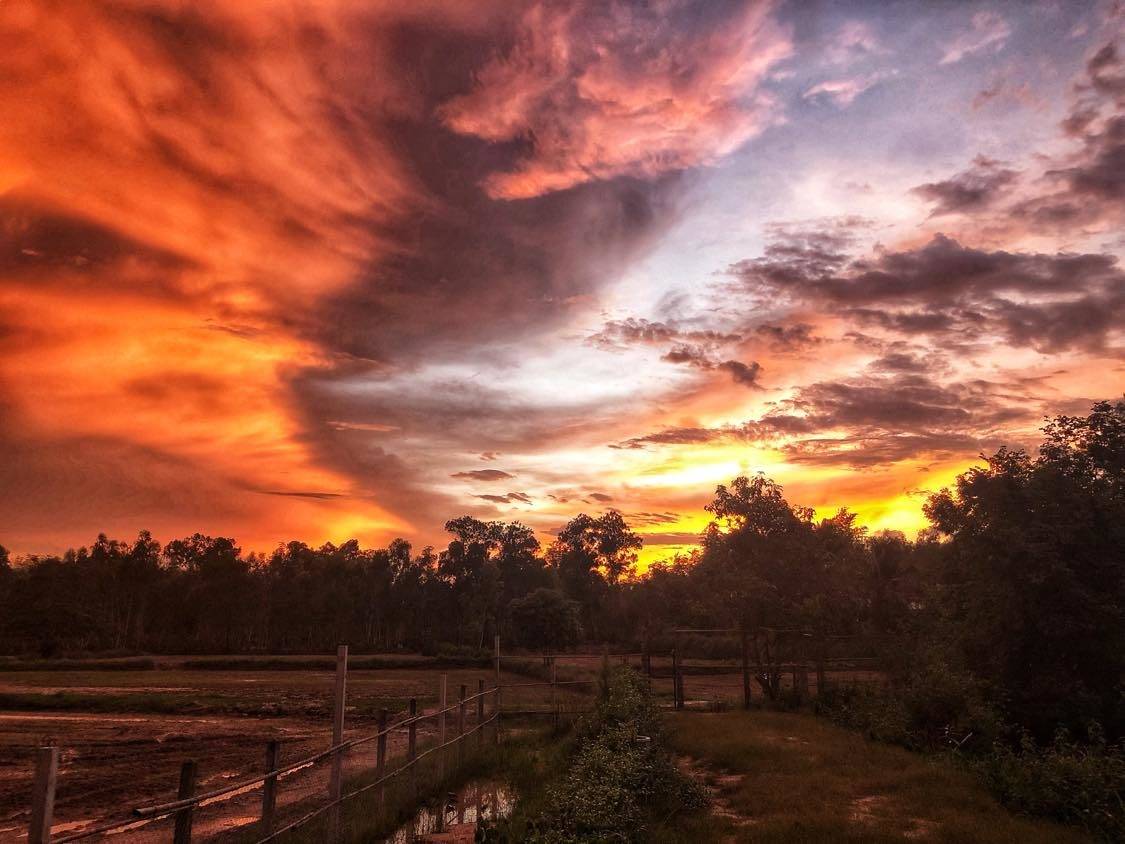
Sakon Nakhon has a distinctly cooler climate than other provinces in Thailand, with cool and dry winds sweeping down from the mountains, and across Nong Han Lake (cooling the temperatures). Sakon Nakhon recorded a temperature of -1.4 degrees Celsius (29°F) on January 2, 1974 and a temperature of -2.5 Celsius (27°F ) on December 24, 1999, the lowest temperature record in Thailand at the moment. However, all that being said, the Sakon Nakhon weather can be very hot during the hot and rainy seasons, with temperatures rising into the 90s F or 32-34 C. The fluctuations in temperatures and cool mountain drafts create some of the most beautiful sunsets in Thailand.
Sakon Nakhon Provincial Seal & Motto
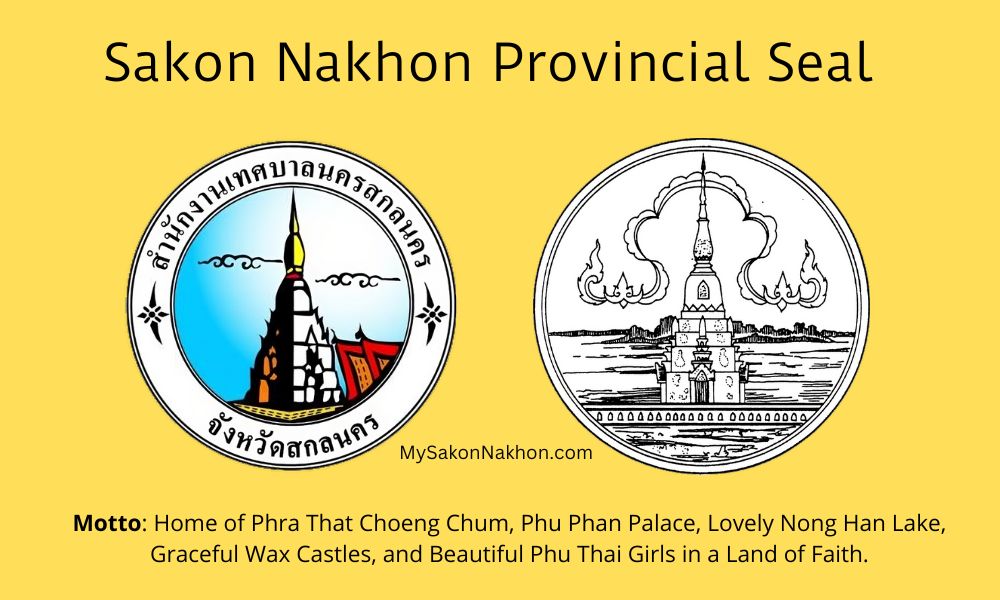
The Sakon Nakhon provincial seal features Wat Phra That Choeng Chum, and it’s motto highlights the province’s attractions and people.
- The 1st English Dhamma Talk Project, Sakon Nakhon Thailand - July 8, 2025
- Affirmations in Buddhism & Thailand - June 7, 2025
- Speak Thai Naturally Without the Gymnastics - April 20, 2025


